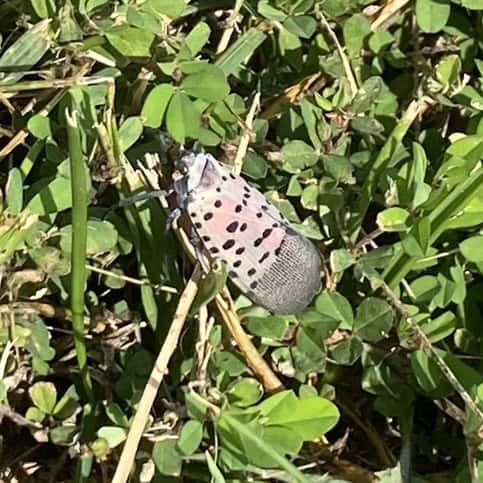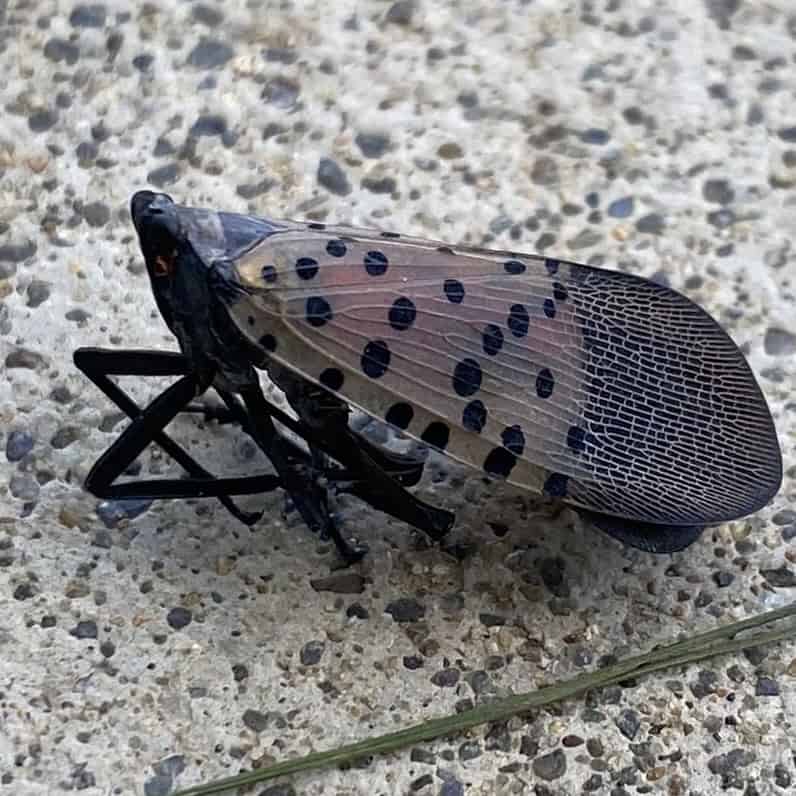The spotted lanternfly is a really exotic looking insect. They are out right now (fall). Read on to find out more.
How to Identify the Spotted Lanternfly
I think that the spotted lanternfly is very easy to identify. I’ve never seen an insect in the United States that looks like it. Their beautiful wings are hard to miss. The forewings are the wings that you can see. The part closest to the head is a purple/pink with black spots. The bottom end of the wings is translucent. Their hindwings are covered by the forewings. They are hard to see, however they are a bright red with black spots at the front, and black and white at the back. Adults are about an inch long and a half inch wide. They really are hard to miss.
Invasive Species – History
Unfortunately, the spotted lanternfly is originally native to Asia. This makes it an invasive species in the United States. Similar to the Emerald Ash Borer. Both are beautiful insects, but destructive. Supposedly the spotted lanternfly was first found in Pennsylvania in 2014. This insect is considered a hitchhiker. In other words, it lays its eggs on almost any hard surface. As a result, it is hypothesized that it arrived as a hitchhiker to the United States on cargo. According to the USDA Animal and Plant health Inspection Service, it currently is in 17 states.
Spotted Lanternfly Destruction
The spotted lanternfly causes destruction in a couple of ways.
First, this insect feed on a variety of plants including grapes and hops, but also stone fruit and hardwood trees.
Second, when they feed on plants, and they cause sap to ooze. Anytime a trees’ trunk in compromised, the risk for other pests to enter is increased. When they feed, they leave what is called honeydew. It gets its name because it smells very rotten and fermented. This is a sticky residue that has two purposes. It causes mold growth, and it attracts other insects. In conclusion, both are harmful to the plant.
Finally, the only good thing is that they like to feed on the Tree-of-Heaven. This is also an invasive species. Maybe the spotted lanternfly will help stop the spread of the Tree-of-Heaven.

